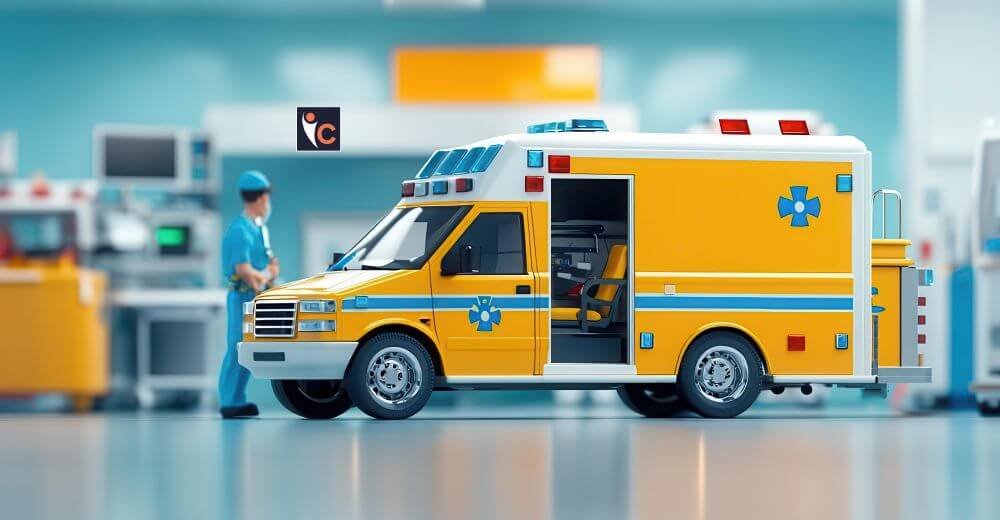Innovations in Pre-Hospital Care
In the past few years, India’s pre-hospital care has seen great and relentless changes. Propelled forward by the most advanced technology and new-age practices, these changes are eventually changing the EMS shape of things to come and the betterment of patients’ outcomes across the country.
The article highlights some of the key innovations that are taking India’s ambulance networks into a new era of efficiency and effectiveness.
The Digital Revolution in Response
Leading the charge is mHealth technology: smartphones and, more important, specialized applications that offer EMS professionals instant access to information on which real-time decisions may be made. The digital revolution has introduced quite a few game-changer capabilities:
- Real-time monitoring of vital signs: the continuous monitoring of a patient’s vital signs by ambulance paramedics during transport to allow for immediate interventions where appropriate.
- Electronic Patient Care Reporting (ePCR): Say goodbye to cumbersome paper-based systems. The ePCR turns documentation into an automated means of better management of data for greater in-depth analysis of emergency responses.
- Telemedicine Services: Telemedicine integration has probably been one of the most important developments. This has really empowered the on-site paramedics on scene to actually consult with remote specialists in real-time. This definitely shifts the diagnostic accuracy and treatment protocols dramatically. Such an innovation is very useful in complex cases or where access to specialized medical expertise is limited.
Advanced Diagnostics on the Move
There’s more to a modern ambulance now than just being an ambulance: it’s become a movable medical unit with just about every sophisticated diagnostic tool onboard.
- Automated External Defibrillators (AEDs): Use of the device has become ubiquitous and immediate action can be delivered in cardiac arrest; the improvements in survival rates are considerable.
- Portable Ultrasound Machines: Ultra miniaturized versions of machines enable paramedics to get quick assessments of internal injuries and make the right judgments for definitive treatment or transport to a hospital.
- Wearable Health Sensors: Wearable tech has opened up a dimension in the patient monitoring space. These sensors offer a constant flow of data regarding vital parameters and allow dynamic care adjustments in transport.
Drones: The New Frontier in Medical Delivery
With its spread over vast distances, diversity, and growing every day, reaching far-flung places in an emergency has always been a problem in India. Medical delivery drones may be the innovative solution that promises to revolutionize emergency response in a hard-to-reach location by carrying crucial medical supplies such as medicines and blood products to places rapidly, saving those critical minutes in life-threatening scenarios.
Simulation-Only Skills Build
Now, knowing that education is not only achieved by modern technology, but modern technology should supplement the betterment of skills in EMS providers, through different training methods, simulation programs come into view as an instrument powerful enough to change things. The professional scenarios provided give the paramedic the chance to sharpen his skills in a controlled environment that simulates actual situations, thus better preparing him when he has to deal with unpredictable, rather real, emergencies.
Challenges on the Road Ahead
Such advances notwithstanding, India’s road to developing a fully modernized pre-hospital care system still comes up against several challenges:
- Infrastructure Gaps: Most regions in India face inadequate roads and communication network, which even the advanced technologies find a bit challenging to overcome.
- Education and Training: Advances in technology are moving at a tremendous pace. This remains one of the biggest challenges, as EMS workers need continuous education and training. It needs to ensure all the staff are updated with the latest tools and procedures.
- Resource Distribution: For fair healthcare delivery, an adequate balance in the distribution of advanced equipment and trained personnel between both the cities and the rural areas are required.
- Data Privacy and Security: In the context of a digital pre-hospital scenario, patient data protection and ensuring the safety of medical data systems will be the primary concerns.
The Way Forward
The answer to these issues will require a comprehensive process with an involvement from stakeholders and taking into consideration the input given by them:
- Government Policies: Investment in infrastructural development and policies that facilitate support for innovative solutions in pre-hospital care would help such new solutions spread on a significant scale.
- Public-Private Partnerships: Public-governmental organization, health care providers, and developers of high technologies can collaborate to accelerate the adoption of new technologies and practices.
- Community Engagement: Educating the public to recognize the need for prehospital care and engaging the communities to enlighten them on access and appropriate use of those services are also deemed important.
- R&D: Continued investment in R&D into unique health challenges of India will be a major step to create solutions addressing specific local issues.
Conclusion
The new system of pre-hospital care in India is a giant leap towards emergency medical services. The mobilisation of mobile health technologies, telemedicine, diagnostic apparatus of high-end, and innovative training programs are changing the face of the landscape of emergency care delivery.
With these innovations thriving, developing, and becoming prevalent, they will, eventually, revolutionize patient outcomes, reduce response times, and contribute to the saving of thousands of lives in India. Indeed, there is far more yet to be done in taking pre-hospital care to a fully modernized system, but what has been done thus far is impressive and inspiring.
The future of emergency medical services in India does look quite promising because it hinges on technology and innovation for it to be more effective, efficient, and accessible in prehospital care delivery. The country, through investment and refinement of these systems, provides a powerful example for other developing nations with the same health-related issues.





